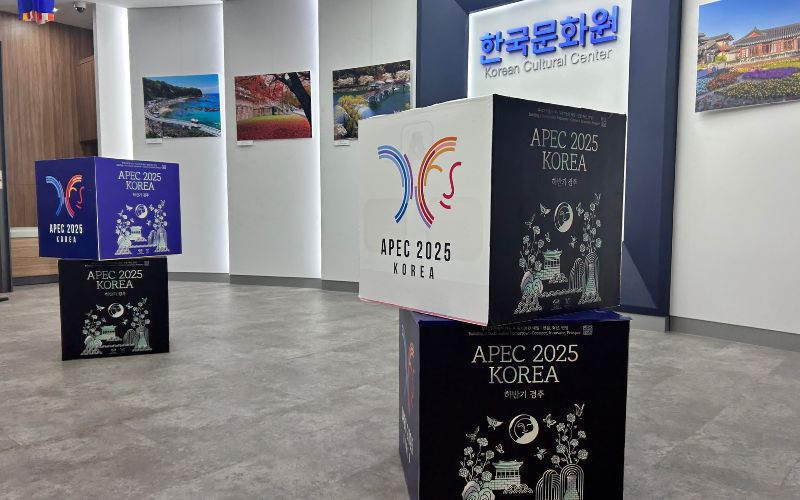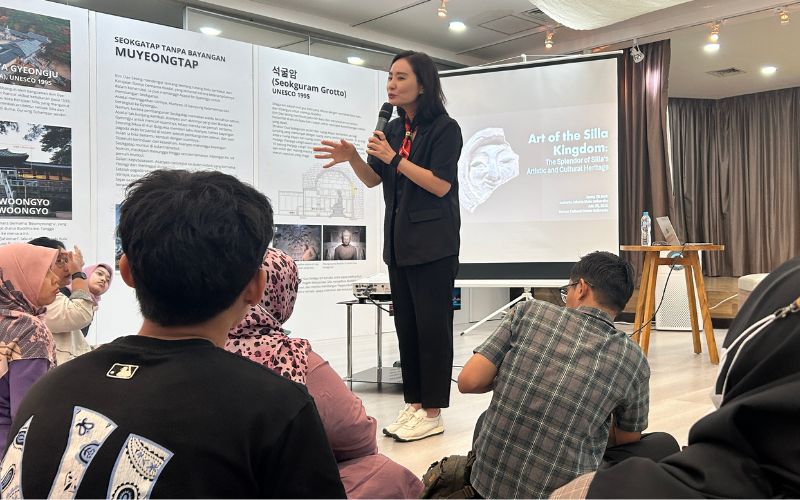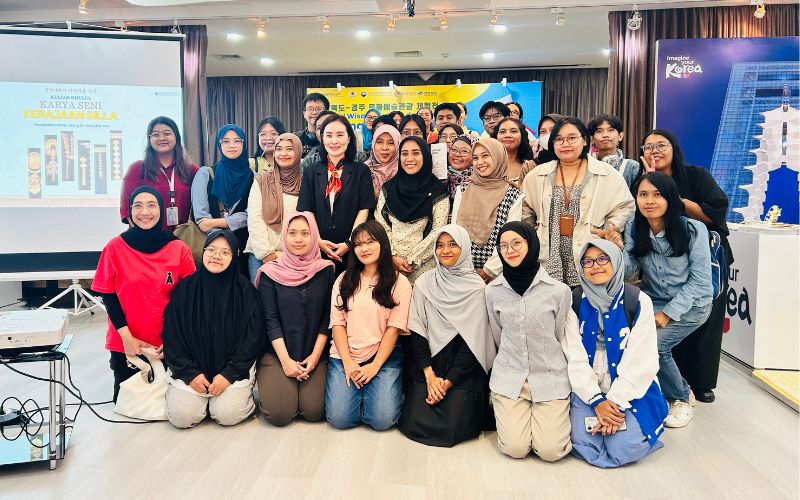On July 28, 2025, the Korean Cultural Center (KCC) in Indonesia hosted a special lecture titled "Art of the Silla Kingdom: The Splendor of Silla's Artistic and Cultural Heritage" in Jakarta. Led by Dr. Jeong Ok Jeon, lecturer at the State University of Jakarta and an experienced art curator, the participants was guided through the rich cultural and spiritual legacy of the Silla Kingdom that ruled the southeastern Korean Peninsula for a millenium, making it Korea’s longest-standing dynasty.
This lecture was part of the Cultural Tourism and Art of Gyeongsangbuk-do Gyeongju Festival, jointly organized by KCC and Korea Tourism Organization (KTO) Indonesia, in collaboration with the Gyeongsangbuk-do Jakarta Office. As Gyeongju prepares to take the global stage for APEC 2025, the festival aimed to introduce Indonesian audiences to the city’s deep historical and artistic significance, highlighting how its ancient culture continues to inspire international dialogue today.

Among the most iconic remnants of Silla are six gold crowns discovered in ancient tombs, including the massive Hwangnam Daechong. These crowns, along with gold swords, jewelry, and imported glassware, reflect Silla’s wealth and global connections. Some glass artifacts are believed to have come from Central or Western Asia, indicating early cultural exchange.
Artifacts from royal tombs also reveal Silla’s symbolic language. Some bear taeguk, believed to bring good luck, while animal-shaped pottery from King Michu’s tomb—featuring frogs, snakes, and turtles—expresses hopes for rebirth and long life. These motifs weren’t just decorative but carried spiritual meaning for the deceased.
Although the main religion of Silla was Buddhism, Silla’s written legacy also reveals a society grounded in both Buddhist and Confucian values. A stone stele in Pohang records royal support for governance and religion, while a vow stone inscription shows two young scholars committing to Confucian learning. The royal family also sponsored many temples, seeking divine protection for the kingdom.

Temple architecture also reflected Silla values. A smiling-face tile from the temple's of Queen Seondeok’s era was chosen as the official symbol of the upcoming APEC 2025 Summit, which will be hosted in Gyeongju, the ancient capital of Silla. The warm expression on the centuries-old tile now serves as a modern emblem of hospitality, welcoming global leaders with a message rooted in Korean heritage.
Another impressive monument from this era is the Sacred Bell of King Seongdeok, also known as the Bell of Bongdeoksa Temple It was cast in 771 CE during the reign of King Hyegong. Regarded as a masterpiece of Unified Silla, it set the standard for Buddhist bells of the era and reflects the era’s advanced metalwork. Dr. Jeong played a recording of its deep and resonant tone for the audience which offered an emotional connection to the past.

Through this lecture, participants gained a deeper appreciation for how Silla’s art, religion, and global outlook shaped a legacy that endures today in Korea’s historical sites, artifacts, and cultural identity.
How about this article?
- Like2
- Support0
- Amazing0
- Sad0
- Curious0
- Insightful0


